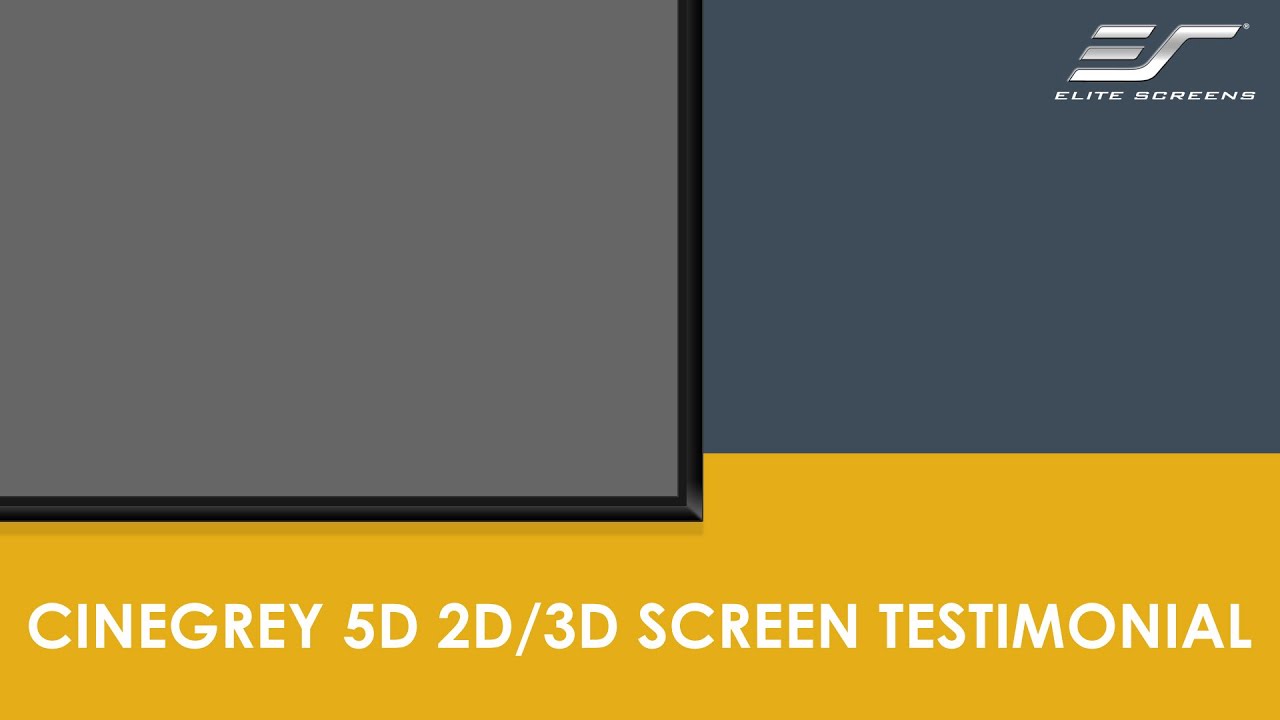Q: I have a high lumens output projector but my room has ambient light/ light colored walls/ceiling. How will the CineWhite® and CineGrey 5D® perform? Is the CineGrey 5D® a silver or grey screen? How does the screen color affect grayscales?
Q: I have a high lumens output projector but my room has ambient light/ light colored walls/ceiling. How will the CineWhite® and CineGrey 5D® perform? Is the CineGrey 5D® a silver or grey screen? How does the screen color affect grayscales?
Our CineWhite® material is an excellent screen material that is highly recommended when you have either a really high output (+3000 lumens projector) and/or are able to control the light in your media room (i.e. a dedicated home theater). However, under conditions when a lower output projector, uncontrolled ambient light, or light colored walls and/or ceiling, the CineGrey 5D® has four key features that result in a better overall viewing experience. Video review of the CineGrey 5D® by AV expert Andrew Robinson
- The CineGrey 5D® material has an ambient light rejecting surface. The material has an angular reflective material that incorporates a diffusion layer over a highly reflective surface. This causes direct light from the projector to reflect squarely into the viewer’s field of vision while the outer contrast layer enhances image quality while absorbing indirect ambient light.
- The CineGrey 5D® contains elements of a silver screen despite its dark appearance. These both work to enhance the contrast ratio and color reproduction in either a well lit or a dark room. With most standard white materials, the image will become washed out when ambient light is present. The ambient light reflecting properties allow the CineGrey 5D® to maintain the image quality even under conditions where there is a high amount of light. In light controlled rooms, there are still certain reflective surfaces that may interact with the projected image such as the colors of the walls/ceiling. The grey/silver properties of the CineGrey 5D® reduce the impact the reflective surfaces, such as light colored walls and ceiling, have on the screen image. Although a white surface is recommended in completely controlled designs, the difference in grayscale between the CineGrey 5D® and CineWhite® surfaces are so slight that they may not be noticeable to most human eyes.
- The CineGrey 5D® is a 1.5 gain screen material that improves the image quality when active 3D projectors are used. There is approximately 50% loss of brightness when 3D is activated and there is even more brightness (aka lumens) being lost when the tinted shutter glasses are worn. The 1.5 gain of the CineGrey 5D® reflects the image at 1.5 times the original brightness of magnesium carbonate which is the standard industry control for creating a 1.0 gain white projection screen.
- The CineGrey 5® is also a polarized material that allows for true 1080P 3D content when using a passive 3D projection system (i.e. dual projectors with an AFlex5D passive 3D video processor). The CineWhite® material is not polarized and thus the only 3D content that can be displayed on that surface must be from an Active 3D projector. In general, passive 3D is easier on the eyes as the viewer is able to see the image with both eyes at the same time rather than the left/right split that occurs during Active 3D.

